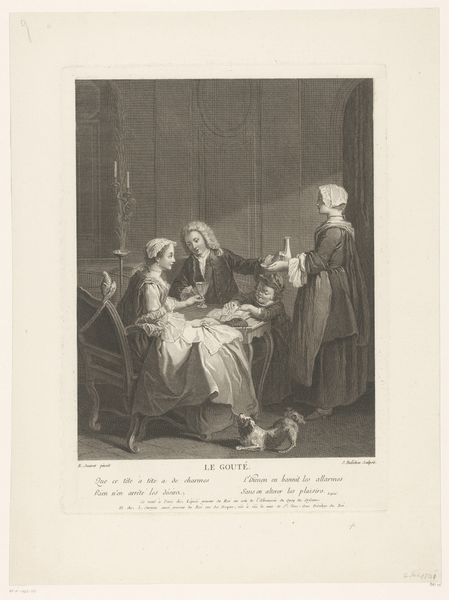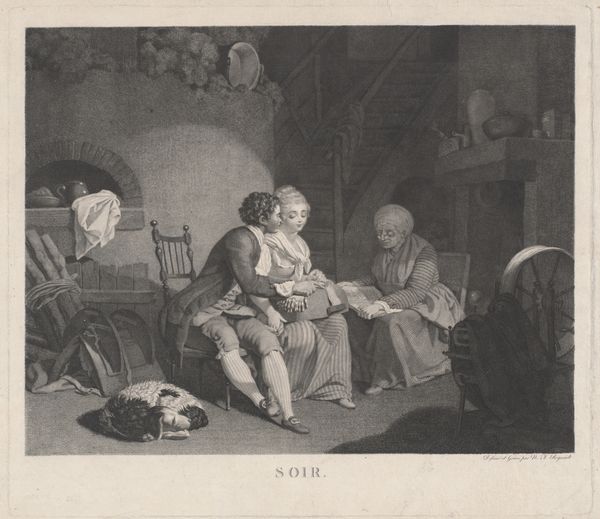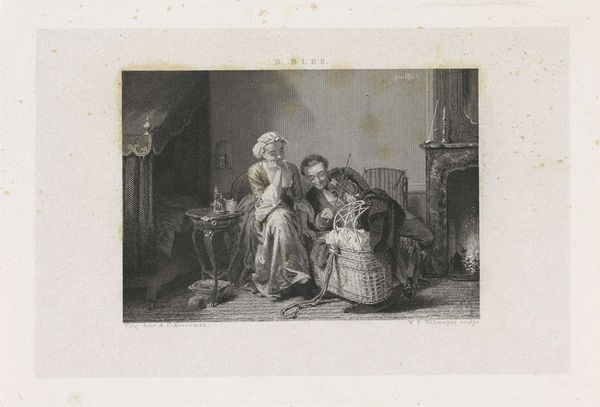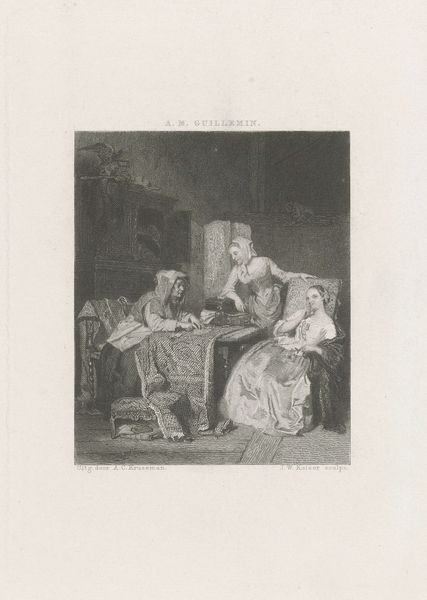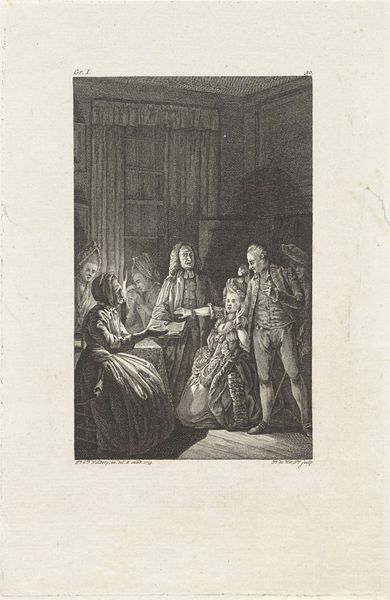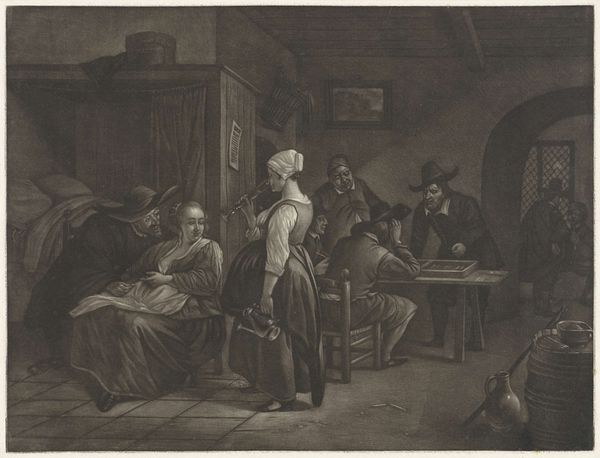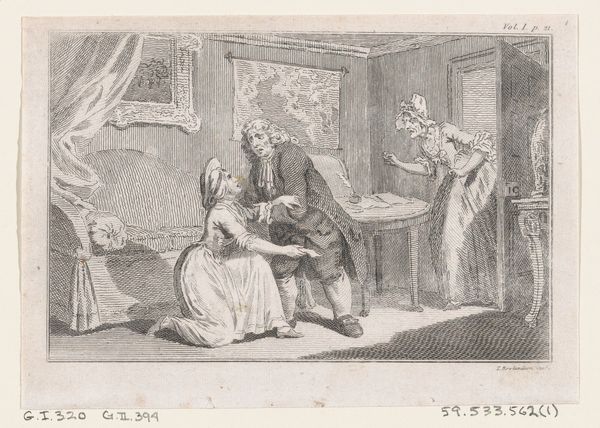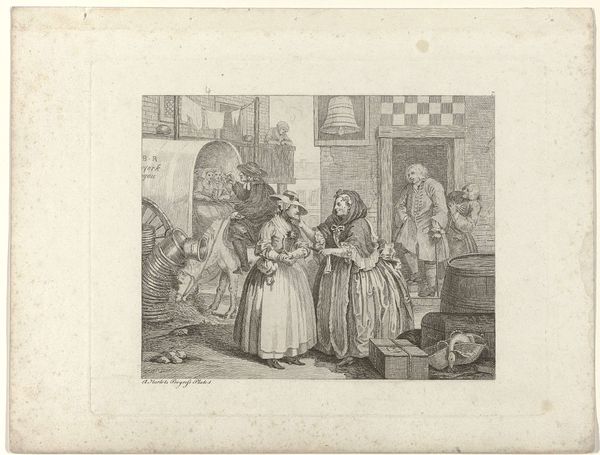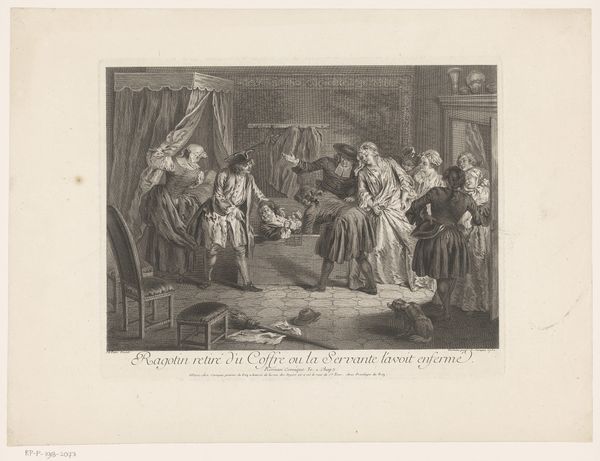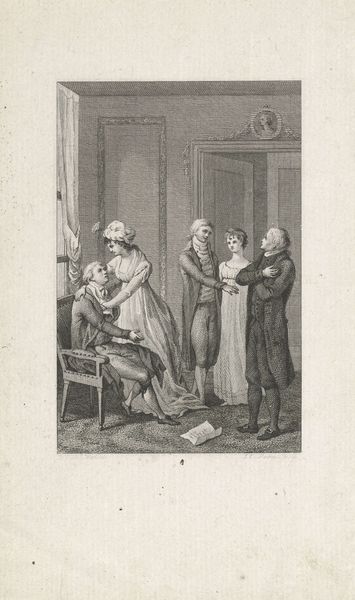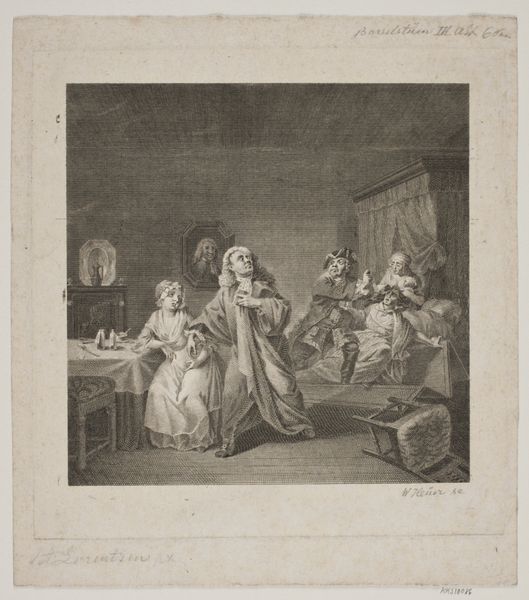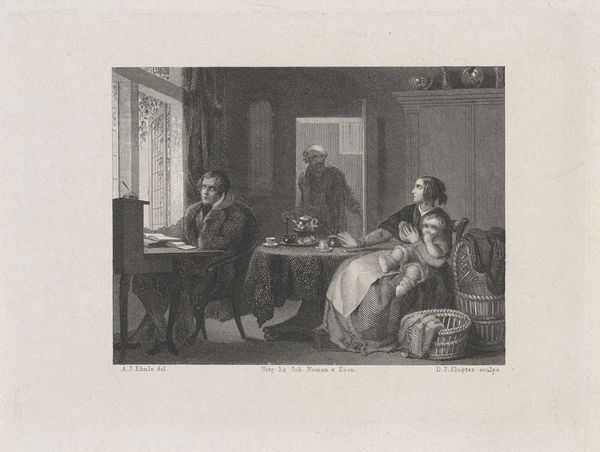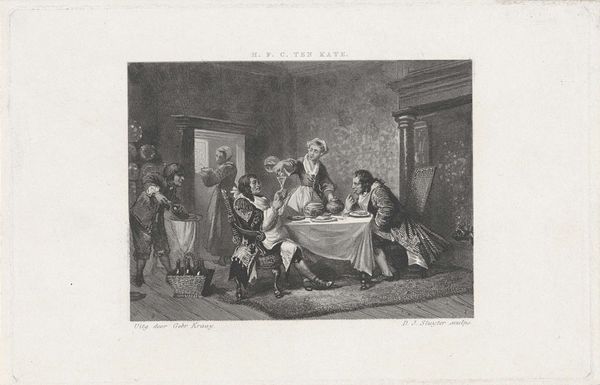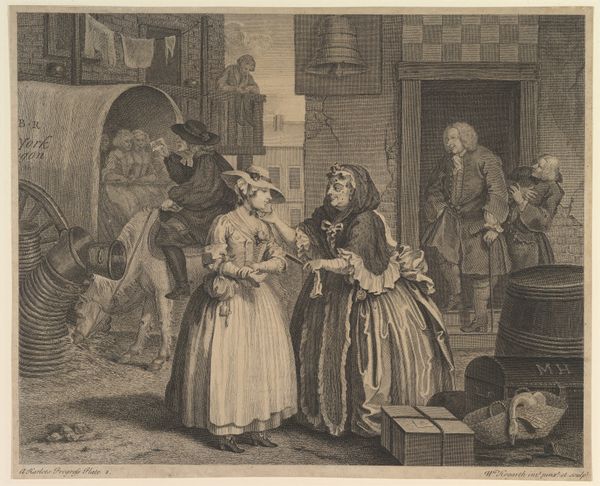
Dimensions: height 178 mm, width 230 mm
Copyright: Rijks Museum: Open Domain
Johann Wilhelm Kaiser made this print, "Interieur met slapende vrouw voor een schouw", using a technique called etching. This isn't drawing in the traditional sense. It's about using acid to bite lines into a metal plate, which is then inked and printed. Look at the incredible detail Kaiser achieved: the textures of the clothes, the rough-hewn beams of the ceiling, the faces of the people. All of this comes from the controlled application of acid, a process that demands skill, time, and a deep understanding of materials. Prints like this were part of a booming industry in the 19th century. They were a way to reproduce images and disseminate them widely, reaching audiences that couldn't afford original paintings. So while Kaiser was an artist, he was also part of a larger system of production and consumption. The labor involved, both his and that of the printers, speaks to the changing landscape of art in the industrial age. It challenges our ideas about art and craft, reminding us that even in the realm of "fine art," the processes of making and the social context are essential to understanding the work.
Comments
No comments
Be the first to comment and join the conversation on the ultimate creative platform.
